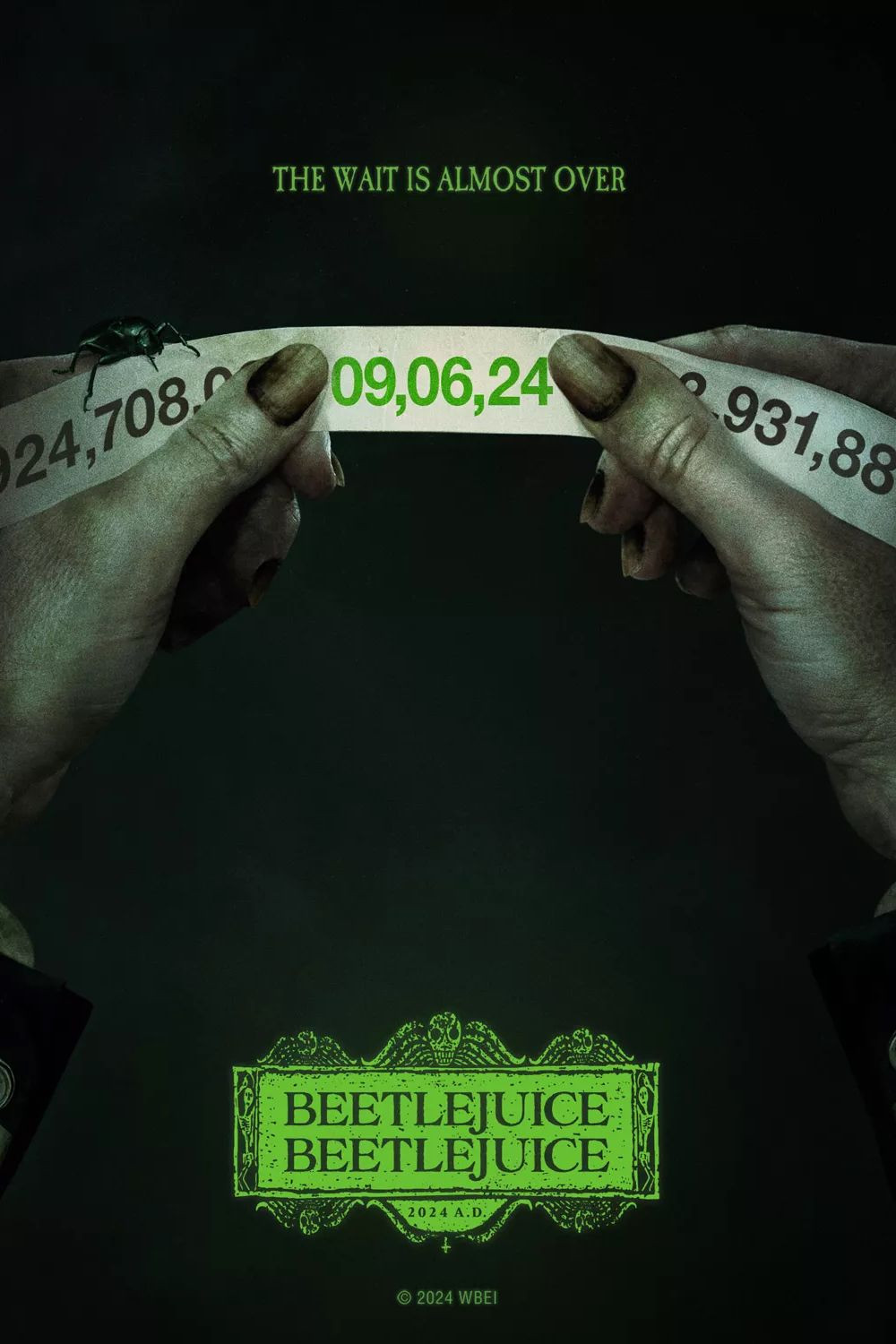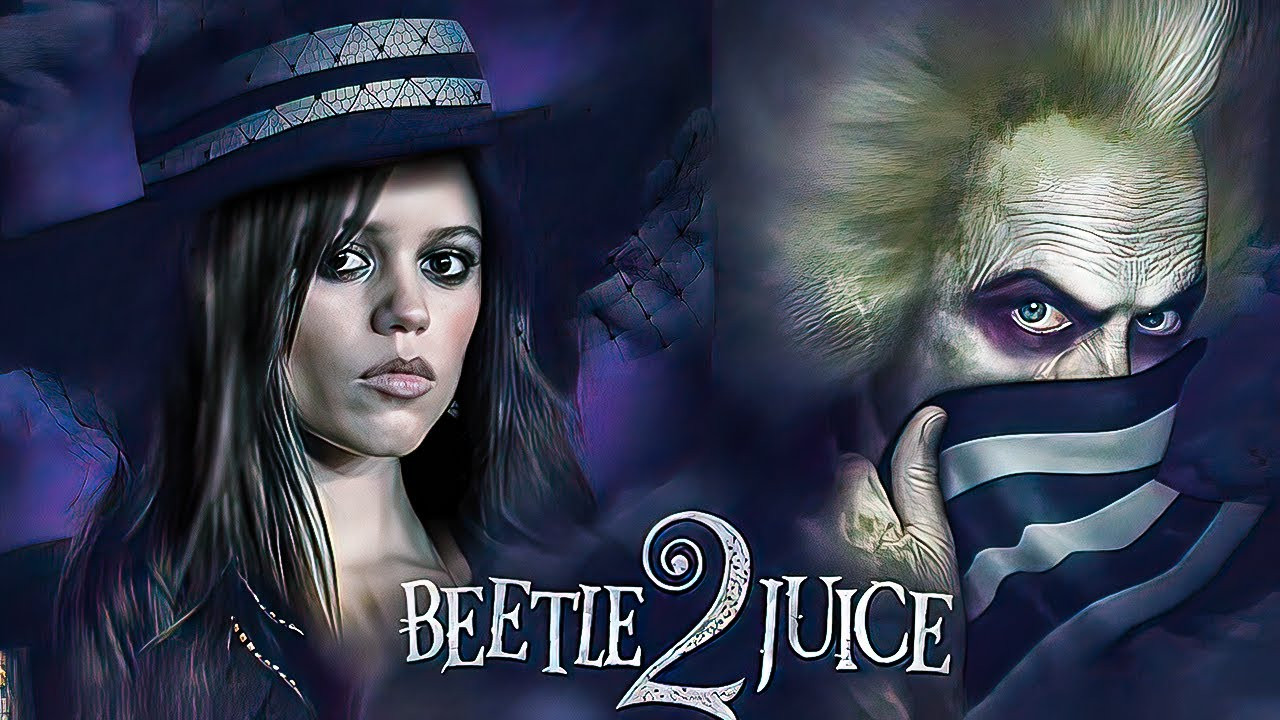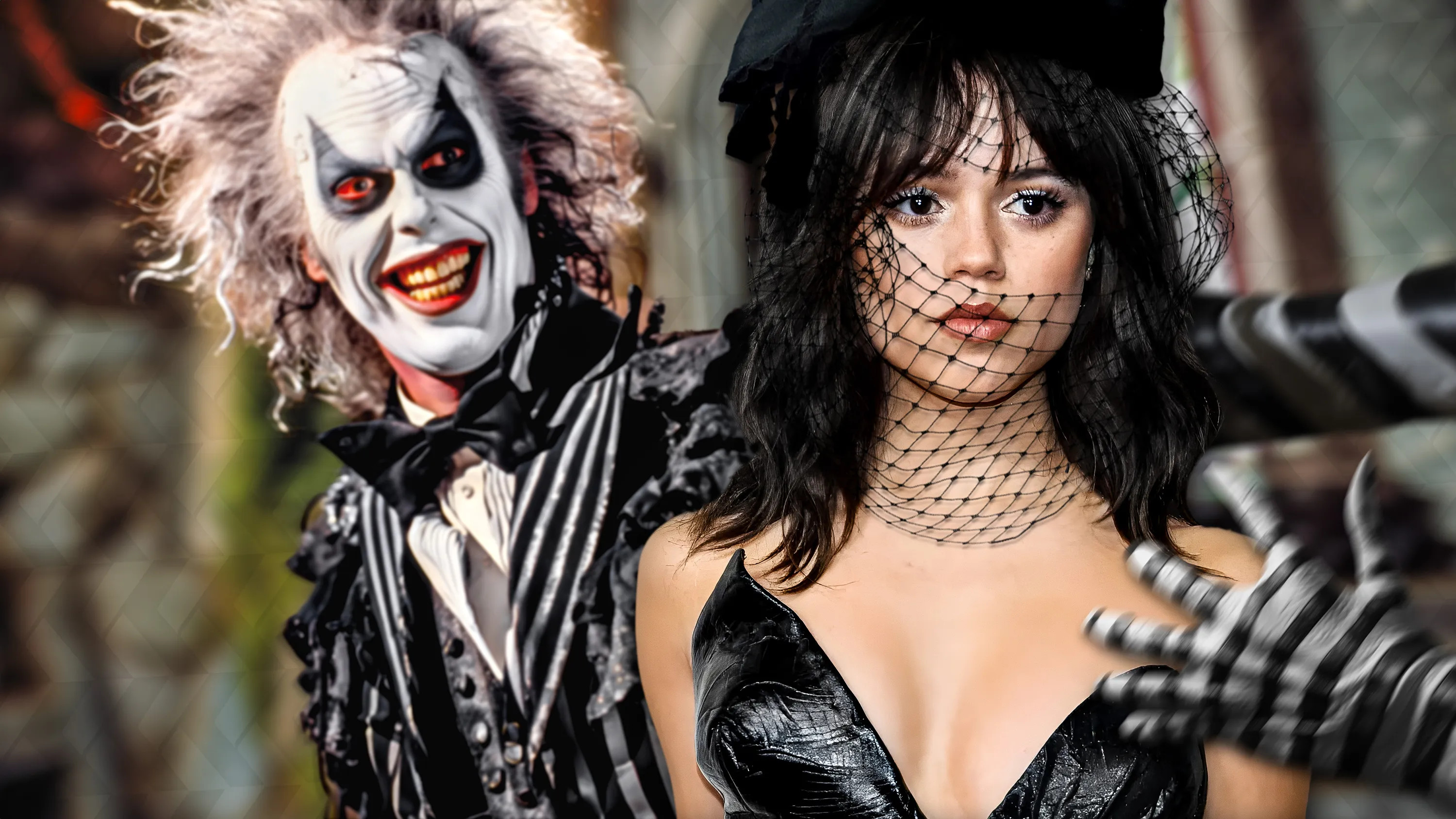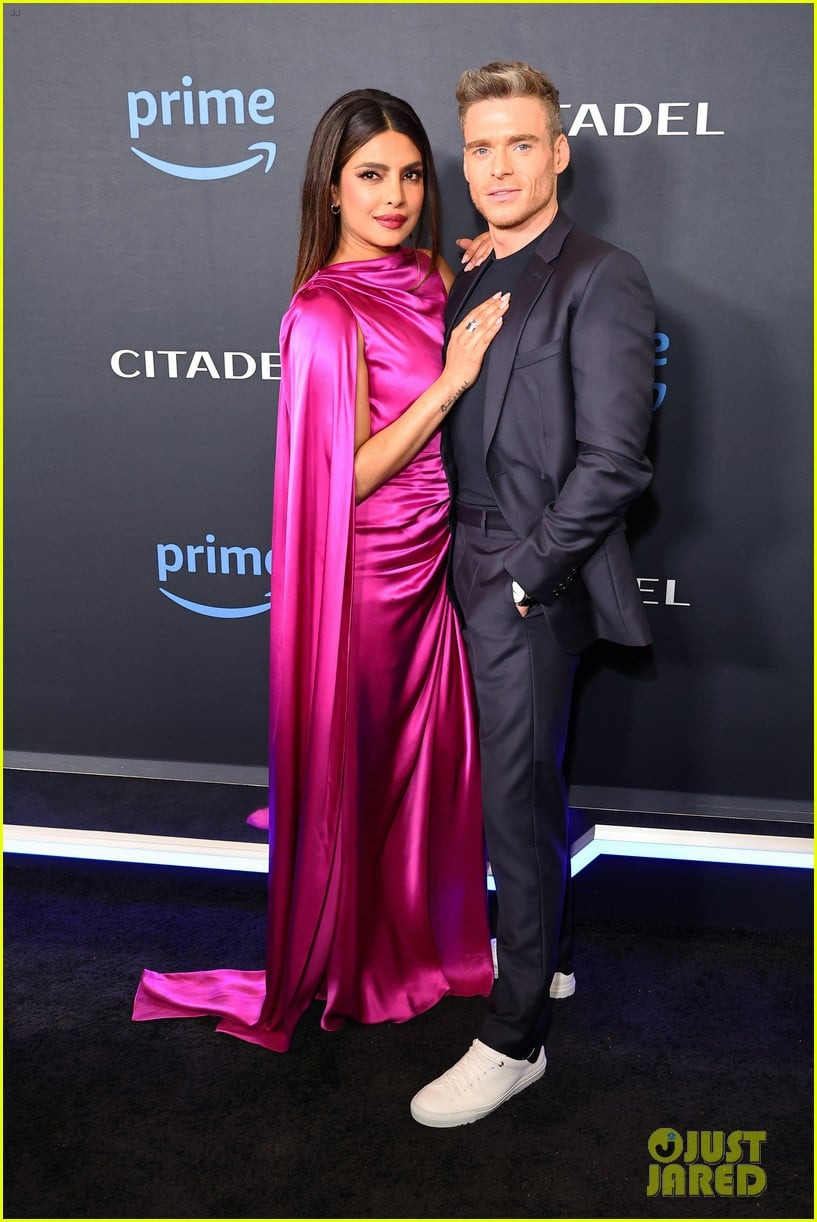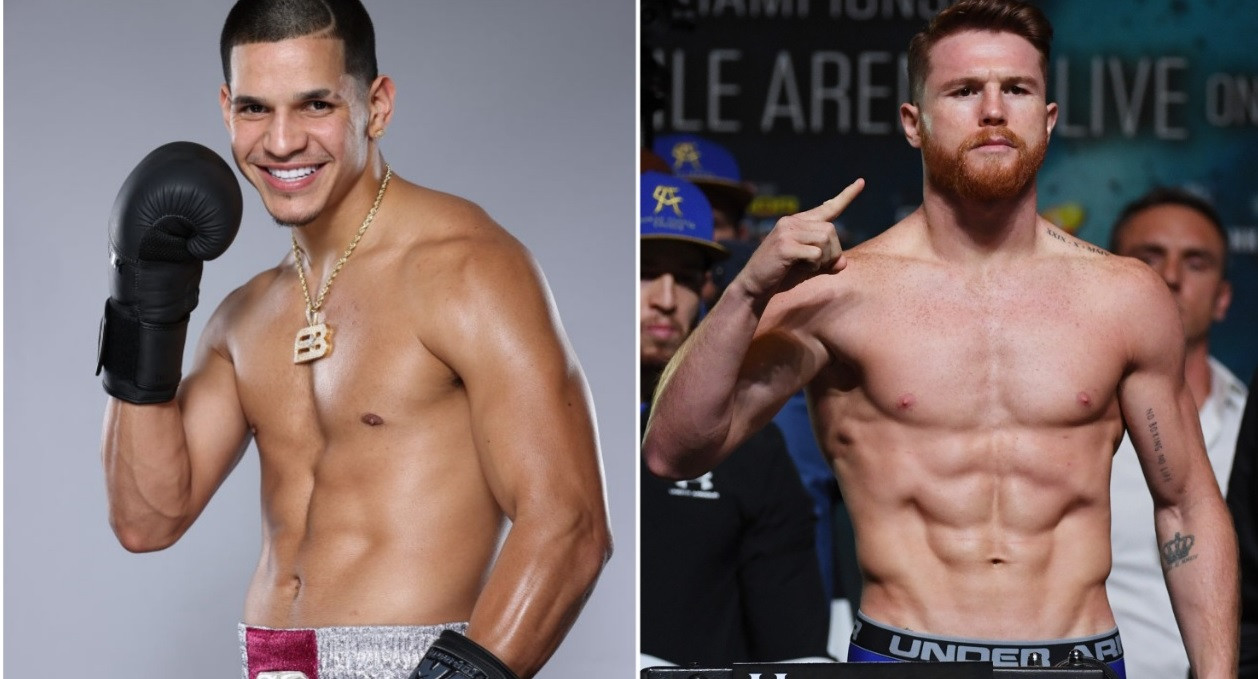More than 36 years after "Beetlejuice" became a box office and cultural phenomenon, Tim Burton is finally releasing the long-anticipated sequel -- and its Sept. 6 release date is almost here. When “Beetlejuice” was released 36 years ago — you read that right; in the Before Times — director Tim Burton was not yet a household name. Winona Ryder, making her third movie, was all of 16 years old. Michael Keaton was in an early career slump. And no one had any idea what that movie title was about.
Nearly four decades is enough to turn anything into an institution, though, and since Burton’s scruffy little ghost comedy has already been repurposed as an animated TV series, a video game and a 2019 Broadway musical, it’s a wonder a simple sequel took this long. Here “Beetlejuice Beetlejuice” is at last, and a mixed bag it is, too, with highs that are almost up there with the maniacal, macabre invention of the original and lows that are big-studio business as usual.
It matters that the three returning actors from the first movie are the right three — Keaton, Ryder and Catherine O’Hara as the lavishly pretentious Delia Deetz — that Burton is still in the director’s chair, and that Danny Elfman’s musical score, a character in its own right, returns like a runaway calliope. Taken as a whole, “Beetlejuice Beetlejuice” is entertaining enough for a night out at the megaplex or a lazy Saturday streaming at home, but in plot and impact, it points up how the movies have changed since 1988, and not for the better.
The Return of the Deetzes
The main difference between “Beetlejuice” and “Beetlejuice Beetlejuice” is that the new movie has a plot — about five of them, in fact. Lydia Deetz (Ryder), the Goth teen from the first film, is all grown up and monetizing her ability to see dead people in a hit TV show where she investigates other people’s haunted mansions. The one specter she doesn’t want to see is Betelgeuse (Keaton), the grotty demon in the black-and-white zoot suit, but lately he’s been popping up in Lydia’s field of vision, sending her into panic attacks and worrying her boyfriend Rory (Justin Theroux), who everyone but Lydia can see is an exploitative sleaze.
In a storyline that has now been officially beaten to death by Hollywood, Lydia has a teenage daughter, Astrid (Jenna Ortega), who hates her mom and, more heretically, doesn’t believe in ghosts. (Will mother and child learn to love each other again? Have you seen any family movie made in the last 15 years?) Grandma Delia is as self-absorbed as ever, with O’Hara’s five years as Moira on “Schitt’s Creek” adding fresh layers of narcissism, but Grandpa Charles has been dispatched in a dandy stop-motion shark attack and occasionally wanders through minus a head, obviating the need to rehire the tarnished Jeffrey Jones.
Beetlejuice's Troublesome Ex
Back in the bureaucracy of the undead, Betelgeuse is overseeing the local shrunken-head call center, until he gets word that his ex-wife Delores, a soul-sucking succubus (not a metaphor), has pulled herself back together (not a metaphor) and is gunning for him (a metaphor). Delores is played with witchy authority by Italian movie star Monica Bellucci, which gives “Beetlejuice Beetlejuice” a needed touch of demented class.
Did I mention the undead actor turned cop played with extra-strength mustard by Willem Dafoe? Or Jeremy (Arthur Conti), Astrid’s adolescent love interest, who may have a trick or two up his sleeve? All this to-ing and fro-ing is, in a sense, a betrayal of the first “Beetlejuice,” which didn’t have a storyline so much as a collection of bizarrely hilarious scenes stuck together with Edward Gorey-esque creativity, enjoyably cheap Claymation effects and a great deal of enthusiasm.
A Mixed Bag of Familiar Flavors
For what it’s worth, the double-headed sandworms are back, and Keaton brings a scrofulous, lowdown energy that’s a delight to witness in a man well into his Medicare years. He’s still Betelgeuse; he’s never stopped being Betelgeuse, just as Ryder has never really stopped being Lydia amid all the stranger things in her career. O’Hara, of course, is a living legend.
And Burton? The sad-boy outsider artist of “Edward Scissorhands” (1990) and the Gothic “Batman” (1989) and “Batman Returns” (1992) has long since seen his dark visions absorbed safely into the mainstream and his weirdness nullified by acclaim. That’s what made the original “Beetlejuice” unique: It was funny, unpredictable and weird. The “Day-O” dinner party from that film is a moment that lives on in pop culture, endlessly rewatchable on YouTube for its sheer bananas-ness, and the song’s reprise in the sequel is clever and welcome. But the attempt to top it in the climax with a beloved bit of ’60s/’70s cheese-rock mostly feels forced.
“Beetlejuice Beetlejuice” is at its best — which is more often than you’d think — when it relocates that vein of gonzo surrealism and at its deflated worst whenever it sticks to the story. It’s sprightly enough to make a lot of audiences and Warner Bros. bean-counters happy, but it also confirms that one of the most distinct visionaries in American film history has become a corporate repurposing machine. It’s not insane, and that hurts.
The original “Beetlejuice,” like a lot of movies from the 1980s and ’90s, enjoys an outsized reputation in relation to its actual quality. You probably remember it as being better than it actually is, in other words. It’s fun, it’s pretty good but it is by no means a masterpiece. Keaton’s performance — and, to be fair, Ryder’s, the font from which much goth culture springs — are what made it memorable.
“Beetlejuice Beetlejuice” relies on your familiarity with and memory of those performances. It’s a fun journey down memory lane. It won’t take you anywhere new, particularly, but let’s face it, that’s not why most people will take the trip.
A Familiar Tune, Not a New Symphony
Questions about such a project abound: Why do it? Is everyone back from the first film? Is it true to the spirit of the original?
On that last question, yes it is — which is to say, “Beetlejuice Beetlejuice” is nutty, it’s fun and it doesn’t make a lick of sense. In fact, the sequel makes even less sense, narratively speaking, than the original, and that’s saying something.
It’s basically director Tim Burton getting (most of) the band back together and playing some of the greatest hits, which means Michael Keaton, Winona Ryder and Catherine O’Hara reprise their roles. You recognize the tunes and admire the artistry of the players, but it’s never going to feel as original as it did the first time around.
Lydia (Ryder), the “obnoxious little goth girl” of the original, in the words of her stepmother, still wears her hair the same way and dresses in black, and she still sees dead people. Only she has channeled her gifts into a cheesy TV show, “Ghost House.” Her boyfriend Rory (Justin Theroux) is also her producer, a little too eager to please, helping dig the pills Lydia uses to get through tapings out of the garbage can, even taking one himself.
Lydia has a daughter, Astrid (Jenna Ortega, because who else could it be?), who is away at a private school and all but estranged from her mother. She struggles with the death of her father (Santiago Cabrera), who died in a boating accident on one of his many adventures, and with the attention her mother’s fame brings her.
Delia Deetz (O’Hara, for my money the secret ingredient of both films) is now a famous artist in New York.
A death in the family brings everyone back to Winter River, Connecticut, to the house with the model of the town in the attic. Things go awry, as they must, and soon enough they’re saying Beetlejuice’s name three times, famously the key to bringing the trickster demon into the living world from the afterlife.
Which means bringing Keaton into the movie, which is always a good thing. If you haven’t seen the first film in a while, you might be surprised at how little he’s actually in it; he made a big impression in a small role. The same is true here, where he’s gone for big stretches. But his signature unhinged performance remains intact, and welcome.
This time Beetlejuice’s ex-wife Delores (Monica Bellucci), a soul sucker who literally staples her dismembered body back together to the tune of the Bee Gees’ “Tragedy” (“We parted ways,” Beetlejuice explains), is looking for her former husband, and not for a romantic reunion. All this goes on in the afterlife, where an actor (Willem Dafoe) who in life played a cop and went a little too Method investigates … I dunno. Something. Everything. There’s a lot going on here.
Meanwhile, Astrid meets Jeremy (Arthur Conti), a boy who lives in town and quotes Russian literature. Maybe he’s a reason to stick around a little longer — well, him and Rory’s sudden, tacky proposal to Lydia.
There are a fair amount of laughs. There is something hilarious about a miniature Beetlejuice trying to serenade Lydia from the model of the town, strumming his tiny guitar. A set piece involving lip-synched, reluctant performances of Richard Harris’ version of “MacArthur Park” may not quite conjure the magic of Harry Belafonte’s “Banana Boat (Day-O)” from the first film, but it’s weird enough to work. Weird is what works best here, after all.




